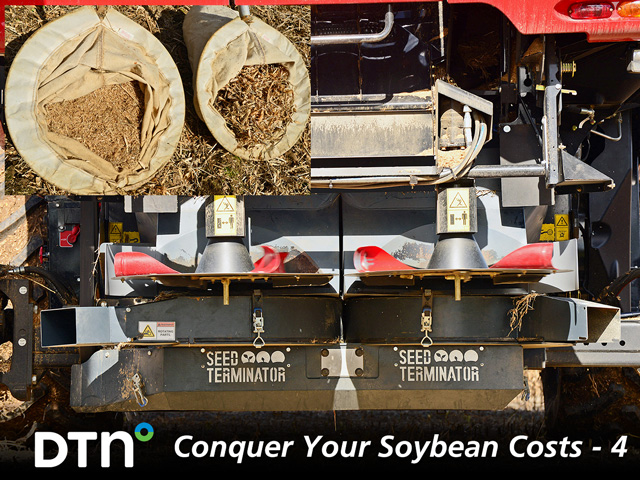
"That's a huge win," Steckel said. "The weeds that do come up are delayed, which gives farmers more time to get postemergent herbicide applied."
Cover crops outcompete weeds for light, water and nutrients. Terminated cover-crop biomass mitigates weed emergence.
John Lindamood reduced the number of postemergent herbicide applications to control Palmer amaranth on his Tiptonville, Tennessee, farm by planting cover crops on soybean ground.
"The goal is to keep weeds at bay until crops canopy, and then you are home free," he said.
WALK, HOE, MAP AND MOW
Lisa Behnken, a farmer and University of Minnesota (U of M) Extension crop education specialist, believes the message that weed control can't only come from a jug is getting through.
On average, 30% of 3,200 farmers in Minnesota surveyed by the U of M from 2017 to 2020 admit they pull weeds.
"We're layering herbicides, but here I am still walking fields like I did as a kid," Behnken said. "We have to be creative to outsmart weeds."
She recommended mapping weed escapes to concentrate control efforts the following year. Mowing waterways and ditches is also an effective weed-management tool before harvest. Combines can grab weeds from field or waterway edges, and spread weed seeds. While not desirable, Behnken said mowing down small weed-infested patches of crop may be needed to prevent weeds from going to seed.
"Herbicide resistance is here to stay, but there are control options that can work on different farms," she added.
TILLAGE AND CULTIVATION
Many farmers who were not involved with organic production sold or parked moldboard plows and cultivators decades ago. Circumstances may dictate that producers once again utilize the implements to help control weeds.
Barber said turning soil over to bury weed seeds or ripping weeds out of the ground during the growing season can be effective control measures. He's not suggesting doing this on every acre but certain areas where needed.
"I know deep tillage goes against conservation practices and thinking, but it may be needed, Barber said.
"One weakness pigweed has is seed longevity in the soil is fairly short, like three to five years," he continued. "It won't completely reduce pigweed, but it will cut them down significantly."
For farmers who no longer own a plow or cultivator, there's plenty of used ones on the market. Marzolf Implement Co., in Spring Valley, Minnesota, for example, has several options. Marzolf recently advertised an International 710 five-bottom plow for $750 and a Koen 4RW row-crop cultivator for $1,200.
"You can find them cheap on the used market," said Richard Rohrer, Marzolf parts manager. "People are still pretty stuck on the chemical bandwagon."
WEED SEED DESTRUCTION
The Seed Terminator and the Integrated Harrington Seed Destructor destroy weed seeds at harvest so they can't germinate in the future. Both systems are combine attachments that use hammer mills to pulverize plants, including weeds and weed seeds, following the threshing process.
Weed seed destructors are widely used in Australia. A handful of machines are being tested and used on farms in the United States.
The success rate of the Seed Terminator on destroying waterhemp seed, according to a University of Missouri study, is nearly 99%. Similar findings were found in university tests of the Harrington. However, it takes many years to reduce weed seed banks.
"If you get something that keeps nearly 99% of weed seeds that enter a combine from going back in the soil, it will be very useful," said Kevin Bradley, University of Missouri weed scientist.
Matthew Wilde can be reached at matt.wilde@dtn.com
Follow him on Twitter @progressivwilde
"tactic" - Google News
November 13, 2020 at 06:10PM
https://ift.tt/2UpoMMQ
Tactics to Outsmart Weed Resistance - DTN The Progressive Farmer
"tactic" - Google News
https://ift.tt/2NLbO9d
Shoes Man Tutorial
Pos News Update
Meme Update
Korean Entertainment News
Japan News Update
Bagikan Berita Ini















0 Response to "Tactics to Outsmart Weed Resistance - DTN The Progressive Farmer"
Post a Comment